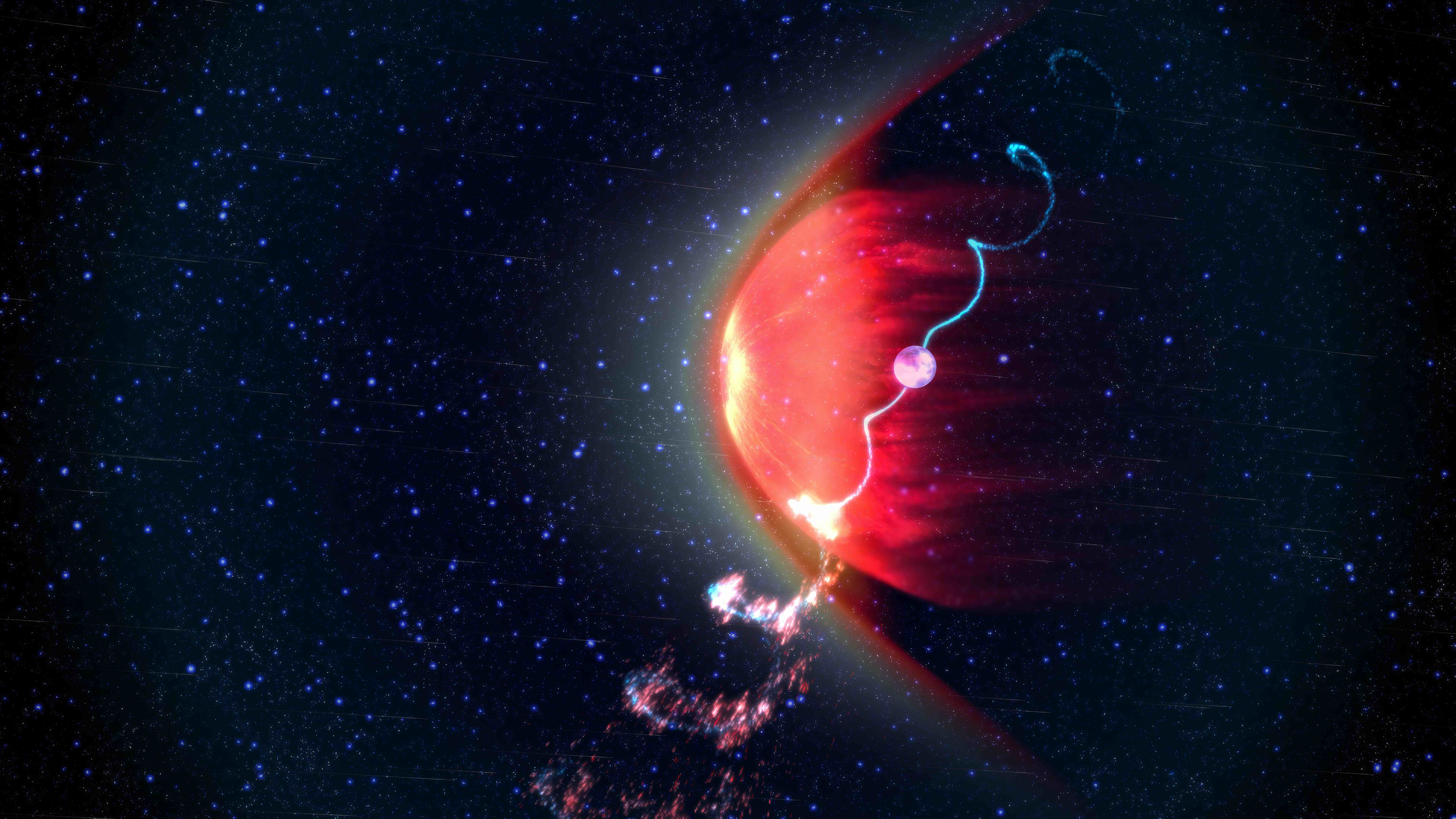 The MeerKAT Pulsar Timing Array
The MeerKAT Pulsar Timing Array
News
Recent scientific highlights from the MeerKAT Pulsar Timing Array.
2025 July: MPTA researcher awarded Top Australian PhD Thesis
Dr Matthew Miles (now a postdoctoral researcher at Vanderbilt University, previously a PhD student at Swinburne University) has been awarded the 2025 Charlene Heisler Prize from the Astronomical Society of Australia, for his PhD Thesis "Millisecond Pulsar Timing and Gravitational Wave Searches with the MeerKAT Radio Telscope". The Charlene Heisler Prize is awarded annually by the Astronomical Society of Australia for the most outstanding PhD thesis in astronomy or a closely related field, showing outstanding excellence and originality and accepted by an Australian university. Congratulations, Matt!
2025 April: Twinkling of a brilliant millisecond pulsar reveals structure of the interstellar medium and physics of pulsar bow shocks
We have undertaken the most detailed scintillation study of a pulsar. Observations of the millisecond pulsar reveal the complexities of structure of the local interstellar medium and enable tomography of the pulsar bow shock.

Image credit: Carl Knox, OzGrav, Swinburne University of Technology
We have used the MeerKAT radio telescope to study in exquisite detail to study the ionised plasma foreground to the extraordinarily bright and nearby millisecond pulsar PSR J0437-4715. To do so, we studied the inteference pattern created when pulses from the pulsar scatter off of inhomogeneities in the tenuous plasma. We found evidence not only 21 screens in the interstellar medium, but four from the pulsar bow shock: regions created when the pulsar and its wind collide the neary empty space between stars.
The paper can be found here:
Bow shock and Local Bubble plasma unveiled by the scintillating millisecond pulsar J0437−4715
Daniel J. Reardon, Robert Main, Stella Koch Ocker, Ryan M. Shannon, Matthew Bailes, Fernando Camilo, Marisa Geyer, Andrew Jameson, Michael Kramer, Aditya Parthasarathy, Renée Spiewak, Willem van Straten, Vivek Venkatraman Krishnan, Nature Astronomy, 2025
Daniel's Conversation article can be found here:
Twinkling star reveals the shocking secrets of turbulent plasma in our cosmic neighbourhood
Daniel Reardon, The Conversation, 2025
2024 December: The first MPTA GW searches
We are pleased to announce the release of the MPTA 4.5-year dataset, alongside the results of the inaugural gravitational wave searches conducted with the MeerKAT radio telescope. These findings highlight MeerKAT’s exceptional capabilities for pulsar timing array science and underscore the critical role MeerKAT and the Square Kilometre Array (SKA) will play in advancing International Pulsar Timing Array (IPTA) collaborations.

Image credit: Carl Knox, OzGrav, Swinburne University of Technology
We have used the MeerKAT Pulsar Timing Array to create the most detailed maps of gravitational waves across the Universe, providing new insights into the gravitational wave background—a cosmic hum generated by merging supermassive black holes and other energetic events.
This international effort, detailed in three studies published in Monthly Notices of the Royal Astronomical Society, demonstrates the power of MeerKAT, one of the world’s most sensitive radio telescopes, in detecting these elusive signals.
Key Discoveries:
- Unprecedented Gravitational Wave Detection: Our team captured a remarkably strong signal from merging supermassive black holes, surpassing similar experiments in significantly less time.
- Detailed Gravitational Wave Maps: The maps reveal unexpected hotspots, suggesting directional biases in the gravitational wave background that may point to new astrophysical phenomena.
These results challenge previous assumptions about the uniformity of the gravitational wave background and open new avenues for studying the formation of massive black holes, galaxy evolution, and the Universe’s large-scale structure. Future observations with MeerKAT will refine these maps and further unravel the mysteries of the cosmic landscape.
Image credit: Carl Knox, OzGrav, Swinburne University of Technology and South African Radio Astronomy Observatory (SARAO)
The papers can be found here:
- The MeerKAT Pulsar Timing Array: The 4.5-year data release and the noise and stochastic signals of the millisecond pulsar population
Matthew T. Miles, Ryan M. Shannon, Daniel J. Reardon,Matthew Bailes, David J. Champion, Marisa Geyer, Pratyasha Gitika, Kathrin Grunthal, Michael J. Keith, Michael Kramer, Atharva D. Kulkarni, Rowina S. Nathan, Aditya Parthasarathy, Nataliya K. Porayko, Jaikhomba Singha, Gilles Theureau, Federico Abbate, SarahBuchner, Andrew D. Cameron, Fernando Camilo, Beatrice E. Moreschi, Golam Shaifullah, Vivek Venkatraman Krishnan Monthly Notices of the Royal Astronomical Society, 2025 - The MeerKAT Pulsar Timing Array: The first search for gravitational waves with the MeerKAT radio telescope
Matthew T. Miles, Ryan M. Shannon, Daniel J. Reardon, Matthew Bailes, David J. Champion, Marisa Geyer, Pratyasha Gitika, Kathrin Grunthal, Michael J. Keith, Michael Kramer, Atharva D. Kulkarni, Rowina S. Nathan, Aditya Parthasarathy, Jaikhomba Singha, Gilles Theureau, Eric Thrane, Federico Abbate, Sarah Buchner, Andrew D. Cameron, Fernando Camilo, Beatrice E. Moreschi, Golam Shaifullah, Andrea Possenti, Vivek Venkatraman Krishnan. Monthly Notices of the Royal Astronomical Society, 2025 - The MeerKAT Pulsar Timing Array: Maps of the gravitational-wave sky with the 4.5 year data release.
Kathrin Grunthal, Rowina S. Nathan, Eric Thrane, David J. Champion, Matthew T. Miles, Ryan M. Shannon, Atharva D. Kulkarni, Federico Abbate, Sarah Buchner, Andrew D. Cameron, Marisa Geyer, Pratyasha Gitika, Michael J. Keith, Michael Kramer, Paul D. Lasky, Aditya Parthasarathy, Daniel J. Reardon, Jaikhomba Singha, Vivek Venkatraman Krishnan. Monthly Notices of the Royal Astronomical Society, 2024
Matt Miles and Rowina Nathan wrote an article in The Conversation about the findings can be found here:
To map the vibration of the universe, astronomers built a detector the size of the galaxy
Matt Miles and Rowina Nathan The Conversation, 2024